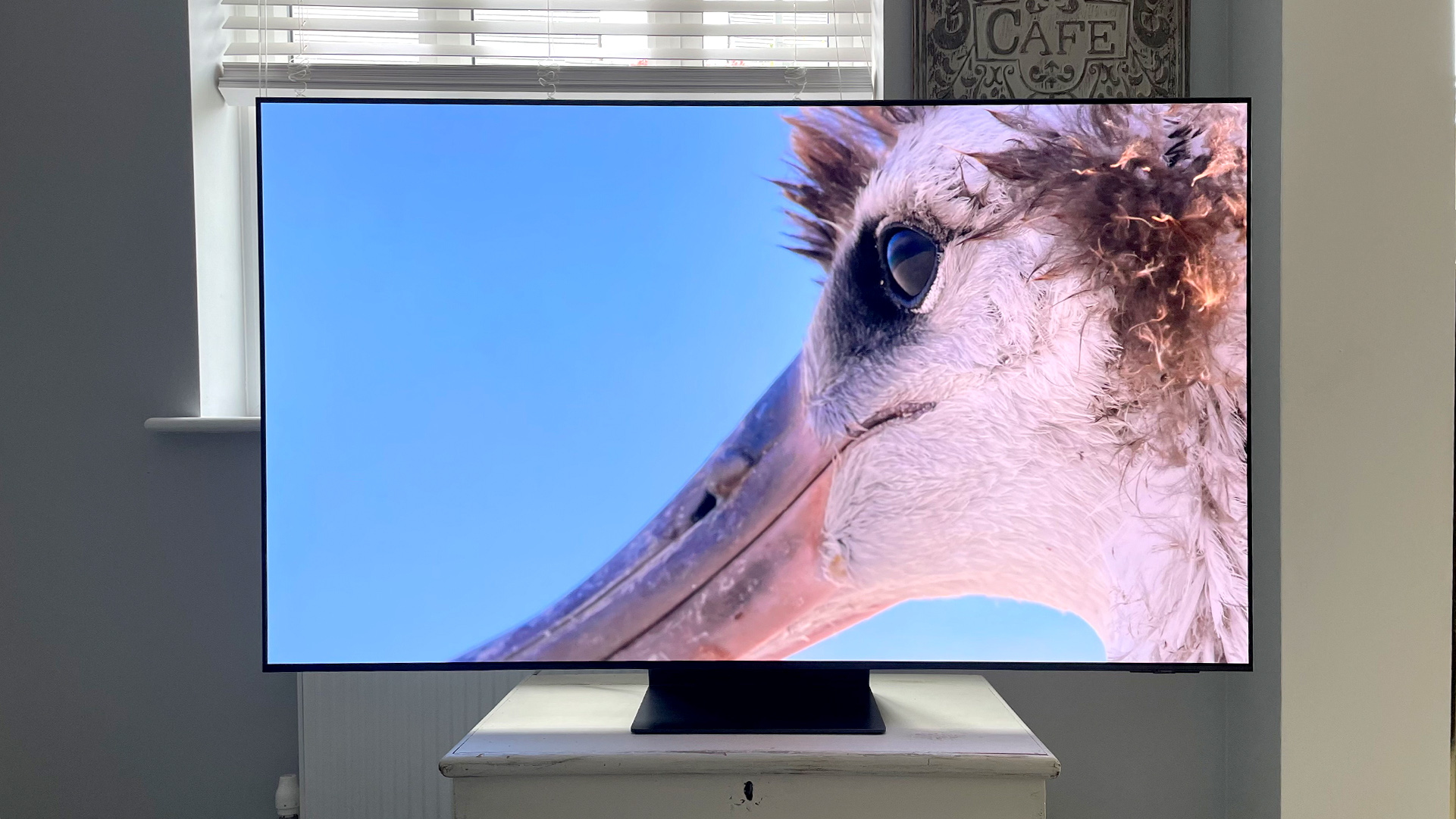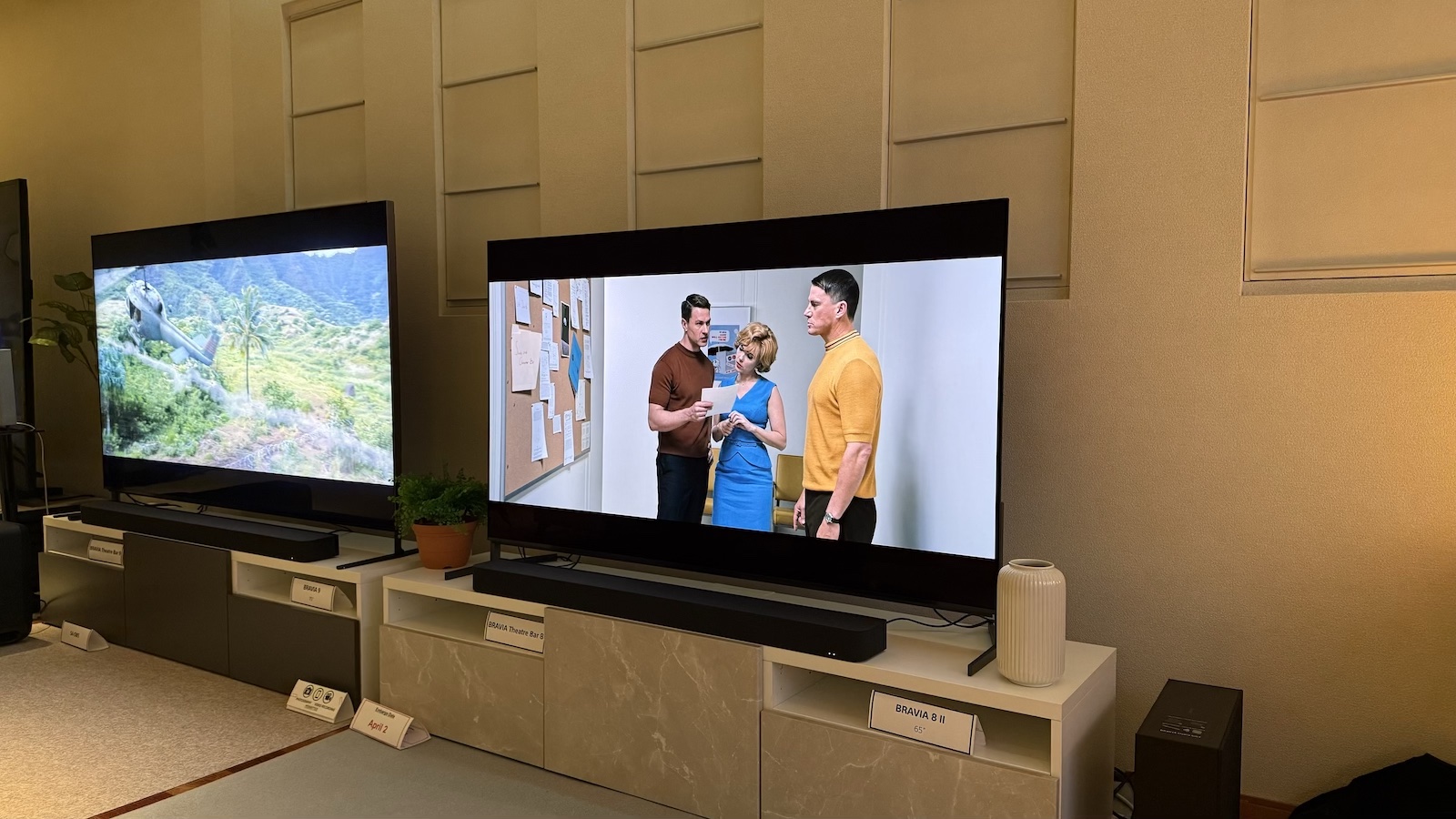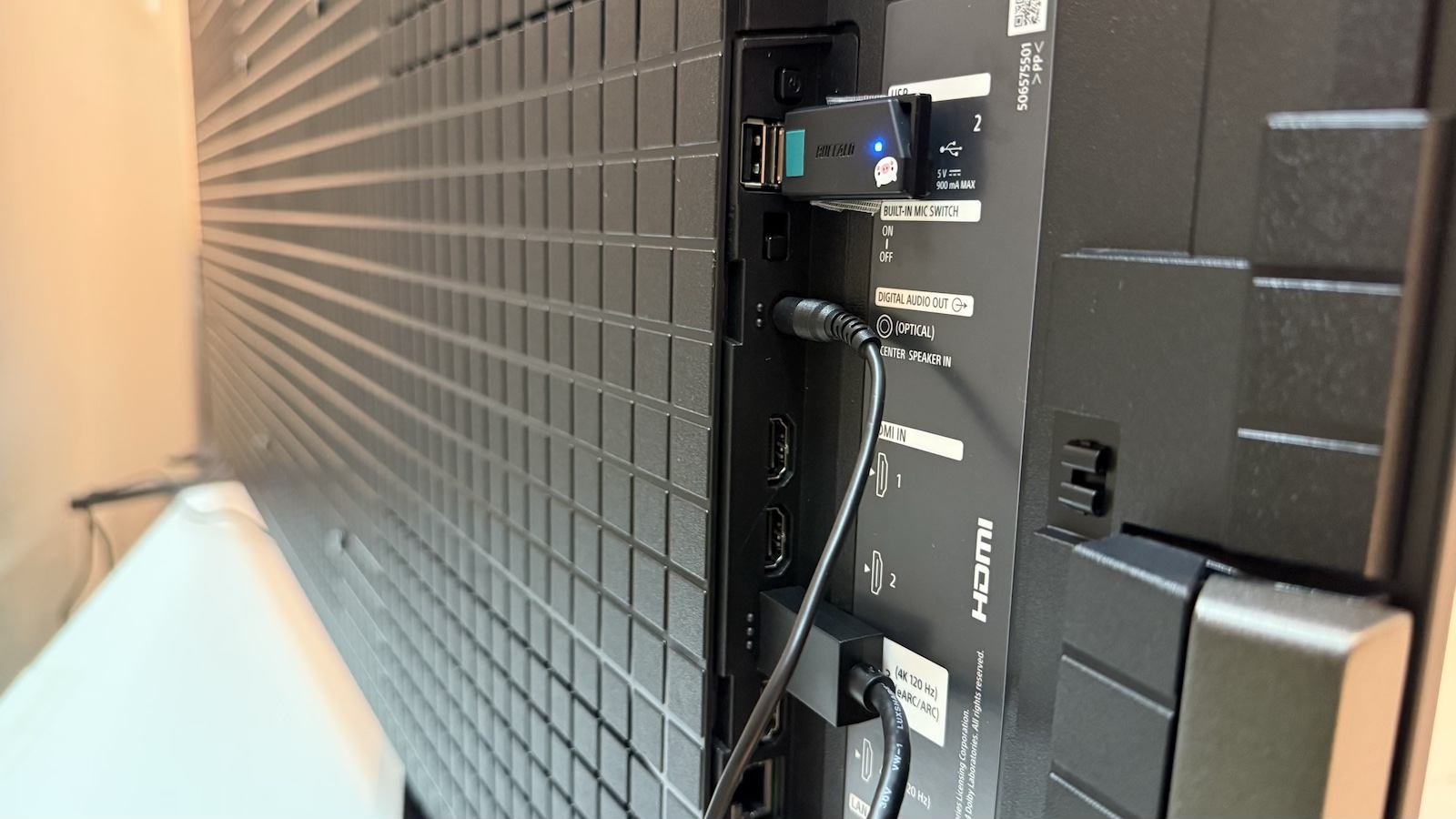Sony Bravia 8 II vs Samsung S95F: which flagship OLED TV is better?
We pit Sony and Samsung’s newcomers against each other to see which one’s worthy of your cash

2025 is rapidly turning into a great year for TV fans. This is because TV tech is moving at an astonishingly fast pace with a wealth of new features set to appear on this year's flagship models.
Top of this next generation list are the Sony Bravia 8 II and Samsung S95F which are set to duke it out for premium buyers' attention.
The Bravia 8 II is the successor to the excellent Sony A95L, while the S95F follows on from the impressive Samsung S95D.
To help judge how the two sets compare and which you should be keeping a particularly close eye on we've penned this guide, detailing the biggest differences between the two.
But, before you go rushing to buy one, remember that, while we've had brief hands-on time with both televisions, we haven't fully reviewed them in our dedicated test rooms.
Until we do, this comparison is based on our initial experiences, and their respective specifications. We'll update this comparison once we've put both TVs through their proper paces.
Sony Bravia 8 II vs Samsung S95F: price, sizes, and release date
Sony has confirmed UK pricing for the Bravia 8 II, with the 55-inch model priced at £2499 and the 65-inch version at £2999.
The new model is scheduled to start shipping from 6 June 2025 in the UK. Notably, these prices are considerably lower than the A95L it replaces, which launched at £2999 for the 55-inch model and £3699 for the 65-inch version.
Potential buyers in the US have some bad news though, as the Bravia 8 II will launch at a noticeably more expensive price than its A95L predecessor.
The 55-inch and 65-inch models will launch at $3500 and $4000, respectively, which is noticeably higher than the $2800 and $3500 launch prices for the equivalent-sized A95L.
There's no word on Australian pricing at the moment, but we'll update this article as soon as we receive more information.
As for the S95F, it is launching in the UK at £2499, and £3399 for the 55-inch and 65-inch versions, respectively. Pricing for the 77-inch model has yet to be confirmed.
That makes for a reasonable difference in pricing between the 65-inch models of both Sony and Samsung sets, which may be enough to sway you over to the more affordable Samsung at that particular size and price point.
The overall price difference is very substantial when it comes to those in the US, with the 55-inch and 65-inch S95F costing $2299.99 and $3299.99, respectively.
That opens up a massive price difference compared to their Sony counterparts that will be very hard to ignore, giving the S95F a substantial edge in the US market.
Screen size (inches) | Samsung S95F | Sony Bravia 8 II |
|---|---|---|
55 | £2499 / $2299.99 / AU$N/A (No such model) | £2499 / $3500 / AU$TBC |
65 | £3399 / $3299.99 / AU$5299 | £2999 / $4000 / AU$TBC |
77 | £TBC / $4499.99 / AU$7999 | No such model |
Sony Bravia 8 II vs Samsung S95F: design and build

The Samsung S95F maintains the slim profile of its predecessor, largely thanks to its One Connect box system.
This handily separates the connections and processing hardware from the display, connecting to the TV via a single cable – a design that's particularly useful for wall-mounting scenarios.
It’s also a great solution for decluttering, and will be a major boon for those of us who enjoy clean finishes. For those who prefer not to wall-mount, the S95F features a centrally mounted pedestal stand, which allows it to be placed on narrower furniture.
Sony's Bravia 8 II appears to share much of its chassis design with the A95L it replaces, featuring a slim profile with a premium metal edge.
It features blade-style feet that can only be positioned at the furthest extremes of the TV's bottom edge.
While Sony claims this helps prevent reflections, it also means the TV requires furniture that's at least as wide as the set itself – 122cm for the 55-inch model and 145cm for the 65-inch version.
The feet can be extended upward to accommodate a soundbar beneath the screen, but can't be positioned closer to the centre.
While the design of a TV isn’t as important as the picture quality it offers, it’s hard to deny that the One Connect box and the dental stand make the S95F more practical in most situations compared to its Sony rival.
Sony Bravia 8 II vs Samsung S95F: features and connectivity

Both TVs come equipped with impressive processing capabilities and comprehensive feature sets. But there are some notable differences between the Bravia 8 II and S95F.
The Samsung S95F, for a start, incorporates Samsung's new NQ4 AI Gen 3 processor, introducing AI Upscaling Pro to its 4K flagship for the first time.
This feature is designed to sharpen finer details and remove visual imperfections such as jagged lines and fuzzy textures. The S95F also features Samsung's Vision AI capabilities, including practical functions such as AI art generation for wallpapers and actor information access via a dedicated remote button.
The Bravia 8 II uses Sony's latest XR Processor with what Sony calls "AI Scene Recognition."
This intelligent system analyses scene data in real-time, optimising each frame for maximum realism. Whether watching dark cinematic content or bright documentary footage, the processor aims to deliver a picture that feels lifelike and immersive.
For gamers, both TVs offer impressive specs. The S95F supports refresh rates up to 165Hz (up from 144Hz on the S95D), while the Bravia 8 II supports the standard 120Hz for console gaming. Both support VRR (Variable Refresh Rate) and ALLM (Auto Low Latency Mode) for current-generation console gaming at 4K/120Hz.
Higher refresh rate aside, the S95F also provides a significant advantage with its four full-bandwidth HDMI 2.1 ports, compared to the two seen on the Bravia 8 II.
One of the Bravia 8 II’s 2.1 ports also doubles up as an eARC connection, which means you’ll have to fiddle around swapping out devices if you’ve got a soundbar and more than one console that you want to use at those higher refresh rates. This will only irk keen gamers, but it’s still a mark against the Bravia.
As for HDR format support, Sony offers HDR10, HLG, and Dolby Vision on the Bravia 8 II. Samsung, meanwhile, continues to exclude Dolby Vision, instead supporting HDR10, HLG, and HDR10+.
At their core the two run on different platforms as well. The Bravia 8 II runs on Google TV, while the S95F uses Samsung's Tizen operating system.
Sony Bravia 8 II vs Samsung S95F: picture quality

Both the Bravia 8 II and S95F have QD-OLED screens rather than the competing fourth generation OLED panel tech seen on the rival LG G5, Panasonic Z95B and Philips OLED950. Despite this, there are some big differences between the Sony and Samsung's screen specifications.
The Samsung S95F uses Samsung's latest QD-OLED panel, which is reportedly 30 per cent brighter than its predecessor while maintaining the same energy efficiency.
Samsung claims peak brightness figures of around 2000 nits (up from 1650 nits on the S95D). The S95F retains Samsung's glare-free technology for reducing reflections – a standout feature from the previous model.
Sony's Bravia 8 II also claims to deliver substantial brightness improvements, with Sony stating it's 25 per cent brighter than the A95L’s QD-OLED panel, and 50 per cent brighter than the standard WOLED Bravia 8.
This increased brightness, combined with Sony's XR Triluminos Max display technology, should, on paper, translate to an ultra-wide colour gamut and stunning contrast.
In our hands-on sessions, both TVs showed promising picture performance. The Bravia 8 II demonstrated significantly better brightness handling than the A95L in Sony's comparisons, with bright highlights maintaining better detail and more natural warmth.
In dark scenes, it also showed improved shadow detail and better low-light colour volume.
The Samsung S95F, in our brief viewing, showed notably enhanced brightness compared to the S95D, with highlights appearing more dazzling and colours looking richer without seeming overdone.
Samsung has also implemented a new AI gamma feature to address the slight loss of shadow detail that was occasionally noted in the S95D.
Both manufacturers are leveraging AI processing to enhance picture quality, with Samsung's AI Upscaling Pro and Sony's AI Scene Recognition both promising to optimise content in real-time for the best possible image quality.
For now, we can confirm that the picture on both sets looked great during our brief hands-on demos – but the real test will take place away from carefully curated manufacturer show room demos, and in the hallowed What Hi-Fi? Testing rooms.
Needless to say, we’re looking forward to it.
Sony Bravia 8 II vs Samsung S95F: sound

When it comes to sound, we know more about the Bravia 8 II’s setup, at the time of writing. Sony has once again opted for its Acoustic Surface Audio+ technology, which uses actuators to vibrate the screen itself to produce sound.
This aims to create a more immersive audio experience where sound appears to come directly from the relevant part of the image.
The Bravia 8 II includes two actuators and two subwoofers, along with Voice Zoom 3 technology to improve vocal clarity. This is all, incidentally, the same setup found in the A95L, which we found to be one of the best built-in TV speakers available.
In contrast, we’ve yet to hear the S95F’s speakers in action, and we haven’t yet been told the specs for the sound system. We presume it’ll be similar if not identical to that found in its predecessor, but we’ll have to wait and see.
We do, however, know that the S95F will debut Samsung’s new Eclipsa Audio technology.
Developed in partnership with Google, this open-source immersive audio format aims to provide creators with tools to adjust audio data, including location, intensity and spatial reflections of sounds to create an immersive three-dimensional experience.
Its effectiveness and adoption remain to be seen, but you can rest assured we’ll put it through the audio gauntlet once our review sample arrives.
Sony Bravia 8 II vs Samsung S95F: early verdict

While we need to wait until we have both televisions in our test rooms for definitive assessments, each shows considerable promise based on our preview sessions with them.
The Sony Bravia 8 II appears to build meaningfully on the excellent A95L, with a brighter QD-OLED panel, enhanced processing, and a surprisingly competitive price point.
Sony's typically excellent motion handling, colour accuracy and innovative sound system could make it a compelling option for those who prioritise a cinematic viewing experience – and it’s hard to ignore its excellent tried and tested audio system.
The Samsung's S95F, on the other hand, works to build on the strengths of the S95D with increased brightness, faster refresh rates for gaming, and comprehensive HDMI 2.1 connectivity. The continuation of the glare-free technology, which was highly praised in the previous model, also gives it a potential edge in brightly lit environments.
Ultimately, your decision might come down to a few key factors. If you prioritise gaming with multiple devices, Samsung's four HDMI 2.1 ports give it an advantage. Its anti-glare screen, central pedestal, and One Connect box might tick all your boxes too.
But if those things don’t affect you, and you’re planning on relying on built-in speakers rather than snapping up one of the best soundbars, then the Bravia 8 II could be the way to go.
We’re holding off an official verdict until both models are fully tested, and will be updating this comparison appropriately.
MORE:
Our picks of the best gaming TVs
We rate the best 65-inch TVs
Best TV: flagship OLEDs and affordable flatscreens tried and tested
Get the What Hi-Fi? Newsletter
The latest hi-fi, home cinema and tech news, reviews, buying advice and deals, direct to your inbox.

You must confirm your public display name before commenting
Please logout and then login again, you will then be prompted to enter your display name.